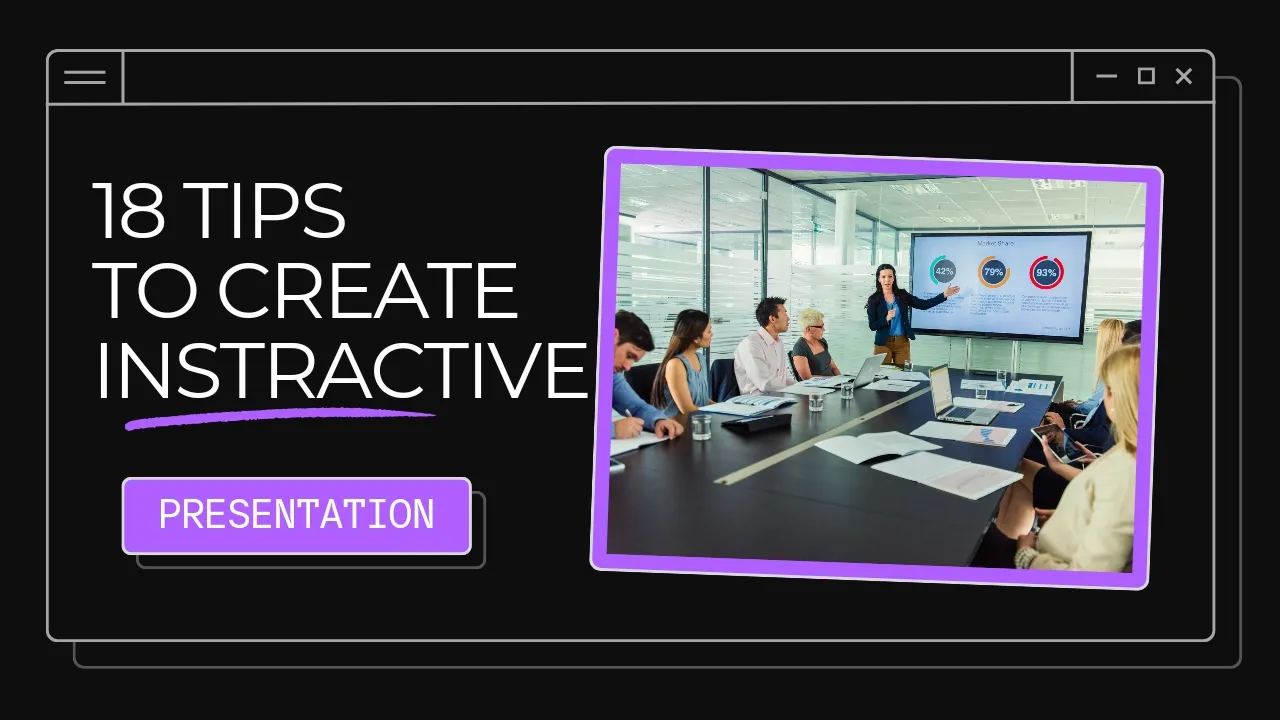18 Tips for Making Class Presentations Interactive
Giving presentations is an essential academic and professional skill. But static one-way speeches often cause audience minds to wander and information to be quickly forgotten.
Using interactive elements makes presentations more dynamic while improving audience focus, participation, and content retention. Here are the best 15 techniques to enhance presentations through audience engagement.
Why Interactivity Matters
Audience attention spans today are short. Passive listeners tuning out miss key messages. Presenting without participation resigns you to an apathetic crowd.
Interactivity fosters an energized learning environment keeping audiences mentally and emotionally involved. Two-way dialogue beats one-way lecturing.
1. Start with Thought Provoking Poll Questions
Get your audience involved right away by opening with 1-2 multiple-choice polling questions on provocative issues related to your topic. Tools like PollEverywhere, Mentimeter or Slido allow real-time responses.
Seeing areas of consensus and debate visualized grabs attention while priming their brains for participation.
2. Use Brainstorming Sessions
Pose open-ended questions on key themes early on and have the audience shout out words, ideas or associations. Capture responses on a whiteboard, then reference the collaborative brainstorming throughout your presentation.
3. Including Storytelling Segments
Weave in short anecdotes, case studies or stories spotlighting diverse applications of concepts, especially local or grounded examples the audience can relate to. Vivid narratives with sensory details and even dialogue quotations hook audience’s imagination.
4. Place Visual Aids Optimally
Strategically place visual aids like photos, charts or models around the room. When discussing related concepts, move the audience’s glance to the relevant display. This forces their eyes to shift focus, re-engaging minds.
5. Assign Small Group Discussions
Break the audience into pairs or small groups, assign a key question or task related to presentation concepts, and then have groups share responses. Listening to peers activates critical thinking.
6. Conduct Role-Playing Activities
Select volunteers to act out scenarios showcasing relevant skills. Alternatively, have the audience use improv to supply context, statements or actions for acting volunteers to react to. Keep it silly and low-stakes. Role-playing cements learning through doing.
7. Leverage Smartphone Polls
Use real-time polling via audience smartphones to instantly test knowledge, collect data or conduct mini-quizzes at transitional segments. Keep polls to 4-5 questions max. Tools like Kahoot. or Poll Everywhere enables this at no cost.
8. Practice Call and Response
Incorporate rhythmic calls and responses to inject energy during key segments. Share a line of information or question then have the audience repeat it back or reply with a correlated response. The interactive pattern keeps listeners alert.
9. Take Quick Breaks
Schedule 1-2 minute quick breaks for audience stretching, movement or chatter to recharge mental batteries halfway through. Reconvene with a fun energizing activity before returning to content. Quick breathers renew focus.
10. End with Reflective Written Exercises
Close by distributing index cards and asking participants to write down two things learned and one lingering question. Collect cards anonymously and read highlights centred around key objectives. This reflection cements retention.
11. Make It Tactile
Pass tactile objects, models or manipulatives around the room when relevant. Letting attendees directly handle related physical items creates visceral engagement and memories.
12. Invite Audience Members On Stage
Invite 1-2 audience members on stage for mini-interviews on the topic or to participate in simple activities or demonstrations alongside you. Being on stage energizes involvement.
13. Plan Games or Contests
Friendly low-stakes games like puzzles, quizzes or contests related to key concepts add fun competition. Award small prizes or certificates to winners. Games incentivize and reinforce learning.
14. Use Music, Sound Effects and Video Clips
Use relevant music, sound effects, movie or news clips to add auditory and visual variety. The novel multimedia elements command attention while enhancing context.
15. Offer a Choice of Topic Focus
Let your audience vote between 2-3 subtopics or activity options at key transitions to guide presentation flow. Giving choice empowers listeners while providing helpful feedback.
16. Pause for Think-Pair-Share
After presenting a complex concept or idea, pause and have students turn to a partner to discuss interpretations, reactions or lingering questions before continuing. The peer discussion allows processing time.
17. Incorporate Physical Movement
Assign mild physical gestures to represent key concepts, then prompt the audience to make those movements together. Linking kinesthetic motion to concepts cement retention.
You can also group questions by theme and have each team move to different quadrants of the room, then back together for answering. Gentle activity engages.
18. Conclude With Review Games
Close with a collaborative rapid-fire review activity like having students line up and state key points covered one after the other. Or play an interactive “Bingo” review game on the concepts. Ending with a fun review game solidifies the core material.
Parting Thoughts
Using some learner participation keeps audiences mentally and emotionally engaged. Use these tips to avoid lecturing passively. Interactive learning feels more dynamic, memorable and meaningful. Experiment with different techniques to find what resonates most with your audiences.
Frequently Asked Questions
Q: How much interactivity is too much?
A: Aim for some interactive element every 5-7 minutes. Maximum engagement occurs when listeners have time to process concepts between activities. Avoid cognitive overload.
Q: What if participants seem reluctant?
A: Ease into interactivity with low-pressure activities like quick polls. Offer reassurance that participation is risk-free. Once momentum builds, reluctance usually fades as benefits become apparent. But read the room and don’t force it.
Q: How do I craft effective discussion prompts?
A: Pose open-ended questions accessible to the group but complex enough to prompt analysis. Tie prompts closely to core presentation themes and goals. Starting with broader questions and then honing in often works well.
Q: Should I provide prizes for game winners?
A: Small prizes help incentivize involvement but aren’t required. The main reward of games and competitions should be reinforcing learning in an enjoyable way.














Leave a Comment